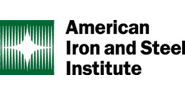Trade Cases

Lifting of Section 232 from EU Unlikely in '21: AISI CEO
Written by Michael Cowden
June 17, 2021
The U.S. and the EU have agreed to “resolve tensions” stemming from Section 232 by year end–but that doesn’t mean the national security tariffs will be lifted anytime soon, the head of the American Iron and Steel Institute (AISI) said.
“I don’t see anything happening before the end of this year. This is a complicated area, and they are going to engage in discussions. … That’s far from a hard and fast deadline,” AISI President and CEO Kevin Dempsey said in an interview with Steel Market Update.
![]() A draft communiqué obtained by mainstream media outlets said the U.S. and EU aimed to lift the tariffs by December 1. But those initial reports were not correct, Dempsey said.
A draft communiqué obtained by mainstream media outlets said the U.S. and EU aimed to lift the tariffs by December 1. But those initial reports were not correct, Dempsey said.
“All these predictions from last week were largely I think based on negotiating positions from the EU, which were designed to try to box and pressure the Biden administration. The Biden administration did not give into that,” he said. “There was no announcement of a lifting of the tariffs.”
And it’s far too early to say whether a general agreement with the EU about easing trade tensions in general is a sign that the broader Section 232 program is in jeopardy. “It’s important to establish up front that this is not simply exempting people from the 232,” Dempsey said.
Case in point: South Korea had talks with the U.S. several years ago that resulted in the country receiving a quota rather than the 25% tariffs imposed on imports from other nations. If the U.S. were to revisit its agreement with South Korea, it could result in a lower quota rather than an easing of trade restrictions. “It’s not necessarily going to be a one-way discussion,” he said.
Indeed, the AISI has been pleased to date with the “strong support” the Biden administration has offered the domestic steel industry. And the lobbying group continues to look forward to working with the Biden team to make sure that policies are in place to address the issue of global excess steelmaking capacity–which Dempsey said remains an existential threat to U.S. producers.
And other trade measures could be enacted even if Section 232 is ultimately lifted from the EU to prevent a potential surge in imports. “We’re not just willy-nilly lifting tariffs on the EU,” Dempsey said.
Whatever happens with Section 232, the U.S. needs to address the longer-term issue of subsidies, including those available to European steelmakers. And finding a meaningful replacement for Section 232 on the EU could take “quite a long time,” he said, pointing to a trade dispute between Chicago-based aircraft maker Boeing and Airbus, its European rival, that dates to the early 2000s.
“We’ve barely just begun a discussion with the EU. What this means long term is far from certain,” he said.
By Michael Cowden, Michael@SteelMarketUpdate.com

Michael Cowden
Read more from Michael CowdenLatest in Trade Cases

SMU Survey: Less support seen for Trump tariff policies
Meanwhile, an increasing number think it's too early to say whether the penalties are going to bring more manufacturing to the US.

CRU: USW seeks exclusion for Canada from Trump’s tariffs
The union is also urging stronger enforcement against countries such as China which break trade rules, and a coordinated Canada-US strategy to protect union jobs across the North America

Price on trade: A lot happened last week – and it wasn’t all about tariffs
Should foreign investment be allowed to reshape the American steel Industry? Not to be lost in the recent on-again-off-again tariff frenzy, Nippon Steel’s proposed takeover of U.S. Steel has also found itself in President Trump’s crosshairs when it comes to trade and industrial policy. Nippon Steel initially announced its nearly $15-billion bid for U.S. Steel […]

Trump signs executive order aimed at making US shipbuilding ‘great again’
President Trump on Wednesday signed an executive order meant to breathe new life into American shipbuilding and curb Chinese dominance in the sector.

Trump still against selling USS to Japanese firm: Report
Despite ordering a new review of Nippon Steel’s bid for U.S. Steel, President Trump said he is still against selling USS to a Japanese company, according to media reports.
